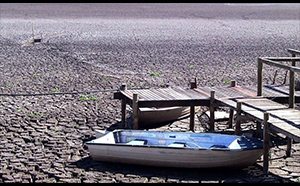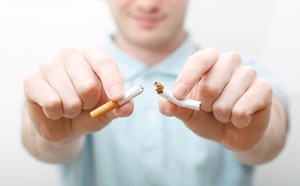Water Crisis
All life on Earth needs water to exist, however fresh water consumption is increasing at an unsustainable rate causing irreversible damage. The fresh water shortages occurring can become globally catastrophic.
Freshwater habitats—such as lakes, rivers, streams, wetlands and aquifers—house an incredible proportion of the world’s biodiversity: more than 10% of all known animals and about 50% of all known fish species. Yet despite the massive role water plays for people and nature, it is a surprisingly finite resource. Less than 1% of the world's water is fresh and accessible.
It’s also threatened. Climate change, population growth and changing consumption patterns are just a few of the myriad forces putting freshwater systems increasingly at risk. Freshwater species are declining at an alarming rate of 76%—much faster than terrestrial or marine species—and freshwater habitats are in worse condition than those of forests, grassland or coastal systems. [worldwildlife.org]
844M people living without access to safe water,
1 of 9 people lack access to safe water.
Water-related Challenges
- 2.1 billion people lack access to safely managed drinking water services. (WHO/UNICEF 2017)
- 4.5 billion people lack safely managed sanitation services. (WHO/UNICEF 2017)
- 340,000 children under five die every year from diarrheal diseases. (WHO/UNICEF 2015)
- Water scarcity already affects four out of every 10 people. (WHO)
- 90% of all natural disasters are water-related. (UNISDR)
- 80% of wastewater flows back into the ecosystem without being treated or reused (UNESCO, 2017).
- Around two-thirds of the world’s trans-boundary rivers do not have a cooperative management framework. (SIWI)
- Agriculture accounts for 70% of global water withdrawal. (FAO)
- Roughly 75% of all industrial water withdrawals are used for energy production. (UNESCO, 2014)
About 5,000 children die each day due to preventable diarrheal diseases such as cholera and dysentery, which spread when people use contaminated water for drinking or cooking. A lack of water for personal hygiene leads to the spread of totally preventable ailments like trachoma, which has blinded some six million people.
Awareness
Learn about water crisis, just like you are doing. If you understand a problem, you are in a better position to have a solution. Talk about it with family and friends. Look out for news and facts on water shortages and crisis areas.
Take Part
Be part of competitions, organizations and societies that aim to preserve and defend natural resources including water. Speak to you parents about donating or helping out charity grouped to provide water to the most needy places. Join pressure groups that stop individuals, industries and governments from cutting down trees and doing other things that pollute and degrade the environment.
Use Your Water Wisely
Never assume that your society is too advanced to experience water shortage. If we do not acquire the right attitude towards water, it is only a matter of time and one day there will be a shortage. Keep the tap off when not in use. Minimize the flushing of toilets and bath times. In effect, anything that you can do to save water, do it.
The best way to make a difference is by simply changing your mindset: Instead of thinking of your tap water as an infinite resource, think of it as having limits. “When it comes to trying understand the challenges to understand water, I really think we focus too much on ‘scarcity.’ Water is, and always has been, scarce,” Cousteau says. “The truth is, we really need to go back to grade school Earth Science class and remember that water on the planet exists in an interconnected cycle.”
To put things into perspective, check out your own water footprint. Not only will you find out how much water you use on a day-to-day basis, but you will also learn how to save it by making simple changes in your diet or lifestyle.
You don’t have to buy it
Americans consume an estimated 1,500 water bottles per second. However, our tap water systems are regulated for drinking purposes, so fill up your reusable bottle for on-the-go refreshment. You can fill up to five, one-gallon jugs with water from your tap for about one cent.
Load it up
A large percentage of our water is wasted in the laundry room. The average washing machine uses about 41 gallons per load, so always make sure you get the most bang for your buck and fill your clothes to the brim. For extra points, install an ENERGY STAR-certified washer.
When in doubt, go low-flow
The average faucet flows at a rate of two gallons per minute, and a five-minute shower uses 10 to 25 gallons of water. Consider installing a low-flow shower head or aerator on your sink. You don’t need a complete bathroom remodel to start saving.
Take it outside
According to the EPA, the typical single-family suburban household uses at least 30 percent of its water outdoors for irrigation. Try watering your lawn in the morning or the evening when it’s cool outside. This will cut down on evaporation due to sunlight and heat.
Plug the leak
Leaky faucets that drip at the rate of one drip per second can waste more than 3,000 gallons of water each year. To check for a leak, read your water meter before and after a two-hour period when no water is being used. If the meter does not read exactly the same, you probably have a leak. To tell if your toilet has a leak, place a drop of food coloring in the tank. If the color shows in the bowl without flushing, it’s time to call a plumber!
Suggested Videos & Documenteries
The Coming Global Water Crisis
The World Water Crisis
Related links & sources
WWF - Endangered Species Conservation
Water.org - Water Charity For Safe Water
Experts Name the Top 19 Solutions to the Global Freshwater Crisis

Large Scale Conflict and Wars
38.9 percent of those polled ranked the possibility of large-scale war as the most serious global issue.

Obesity
Overweight and obesity are defined as abnormal or excessive fat accumulation that may impair health.

Water Crisis
All life on Earth needs water to exist, however fresh water consumption is increasing at an unsustainable rate causing irreversible damage. The fresh water shortages occurring can become globally catastrophic.

Violence Against Women & Child Abuse
Violence against women and children is a serious public health concern, with costs at multiple levels of society.

Climate Change and Destruction of Natural Resources
The Earth's climate has changed throughout history. What about now? You have the power, there are several things that you can do.

Malnutrition & Vitamin Deficiencies
Malnutrition is estimated to contribute to more than one third of all child deaths, although it is rarely listed as the direct cause.

Smoking Tobacco & Nicotine Addiction
Nearly 6 million people die of tobacco-related diseases each year, including more than 600,000 nonsmokers who are exposed to secondhand smoke. Smoking has become an extensive epidemic.

Education Inequalities
A massive amount of people on this globe do not have resources that allow them access to education, and a majority of them are children in unprivileged societies.

Unemployment
Employment is central in our lives. However the issue of unemployment is a major setback to the majority of the countries.

Orphans
Not everyone is called to adopt, but everyone can do something. Here are four great ways to engage your family in showing hope!

Alcoholism
Alcoholism is the inability to control alcohol consumption due to a physical and emotional dependence. Regardless of the severe consequences that accompanies alcoholism, eliminating it is an extreme challenge.

Sex/Human Trafficking
Many people would say slavery ended after the emancipation of the slaves in 1865, but human slavery still exists today in the form of human/sex trafficking.
